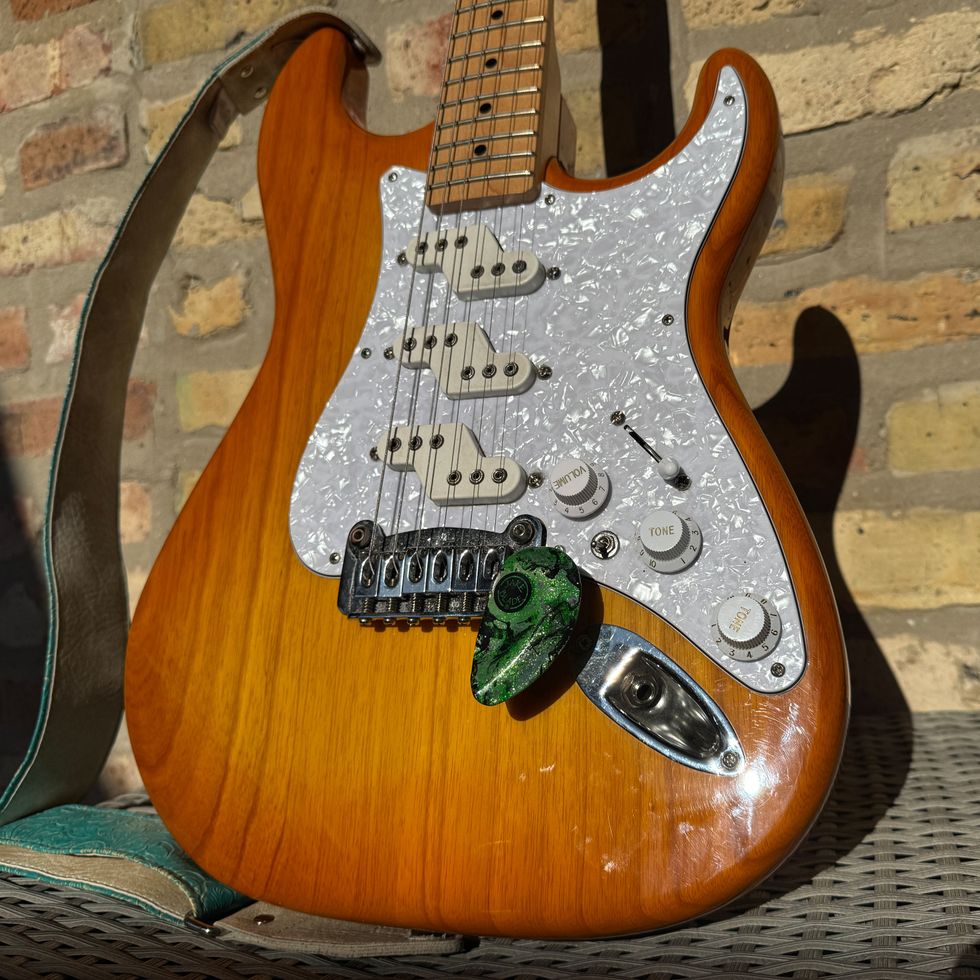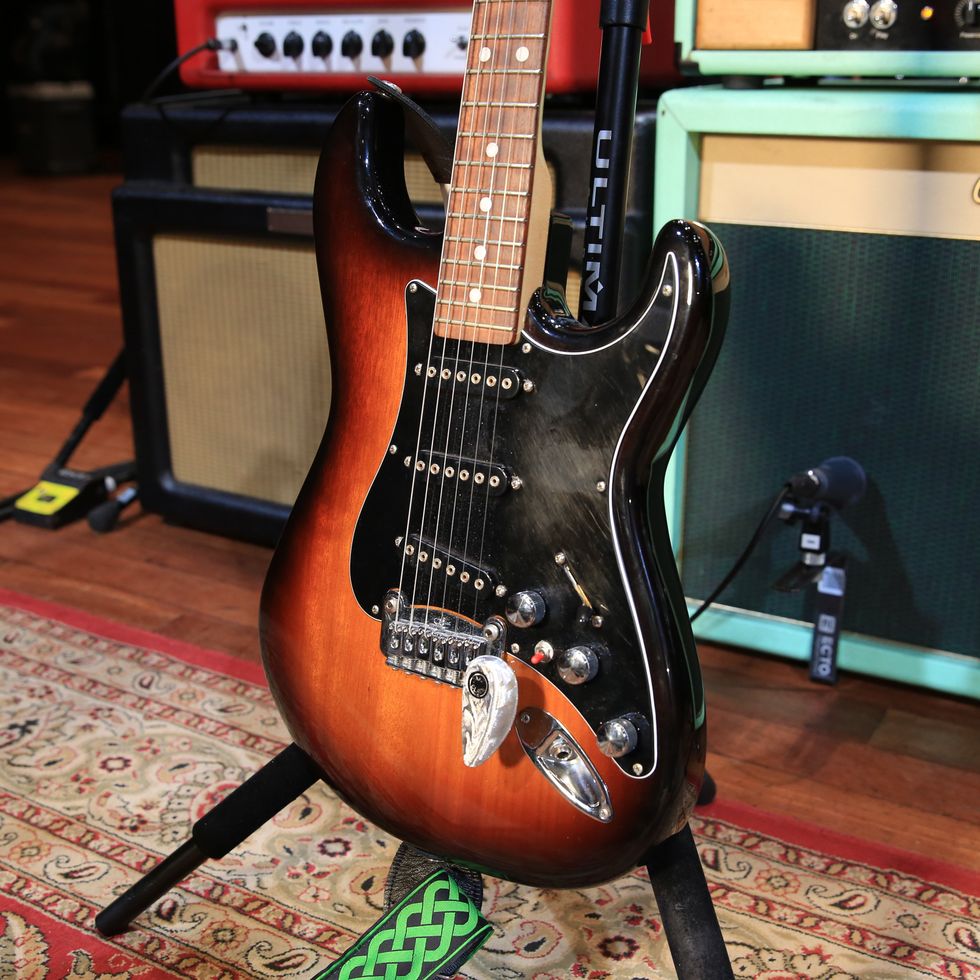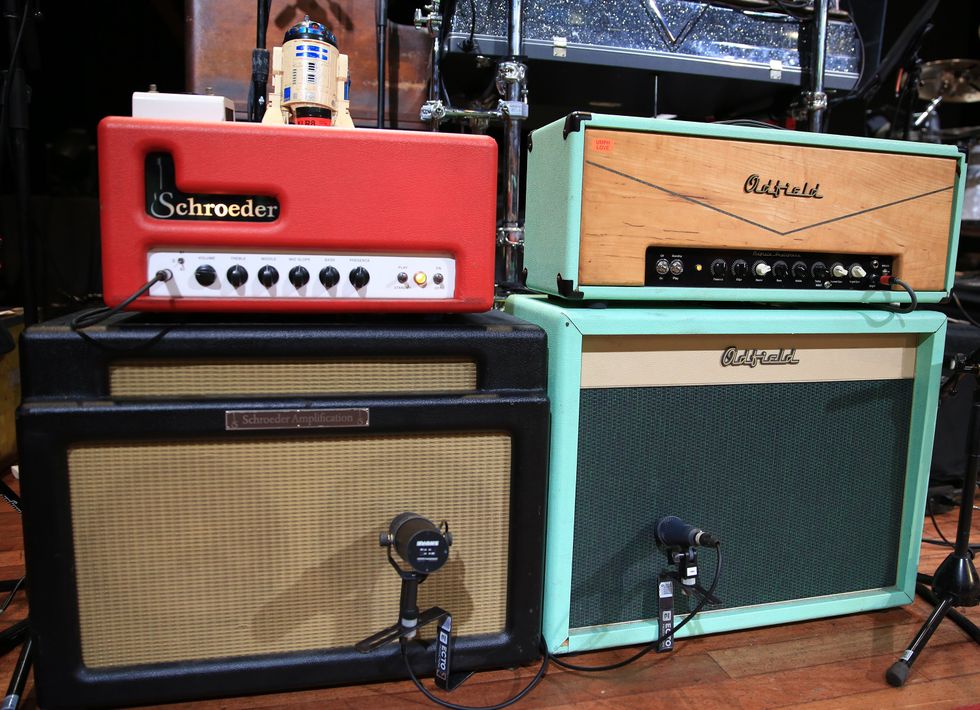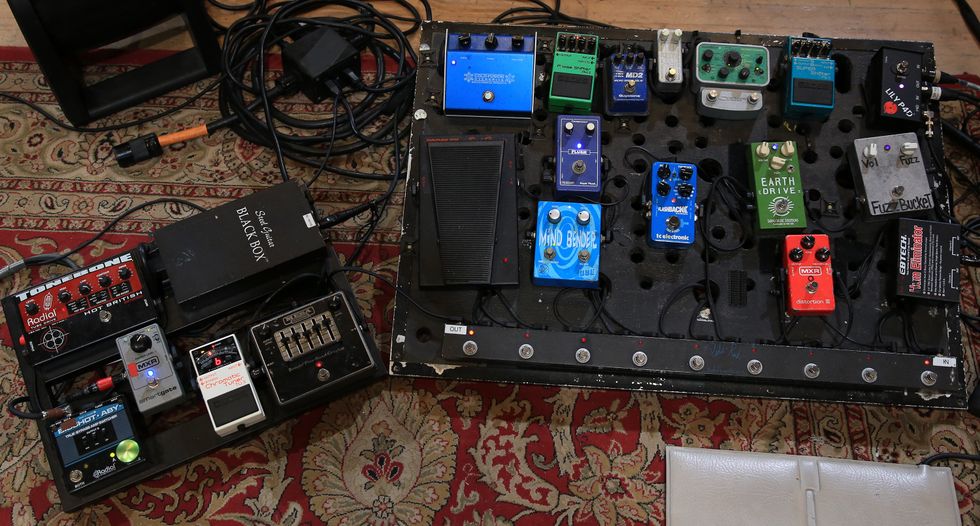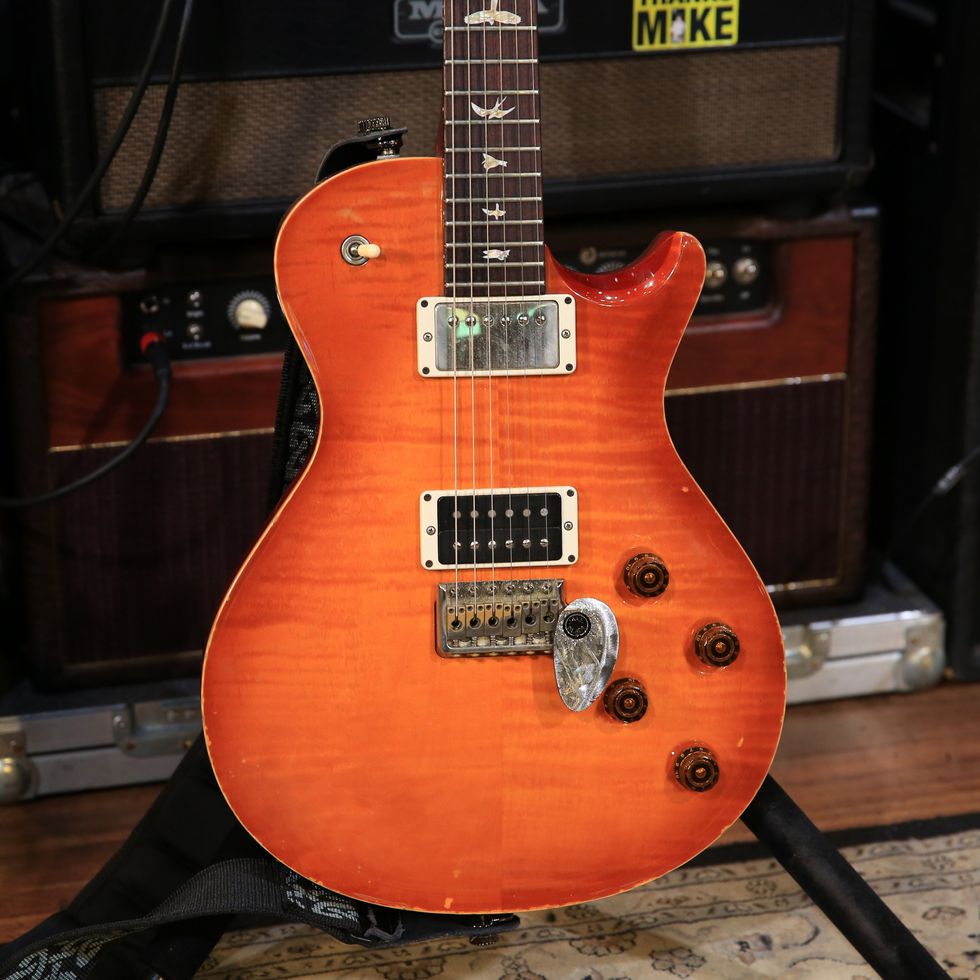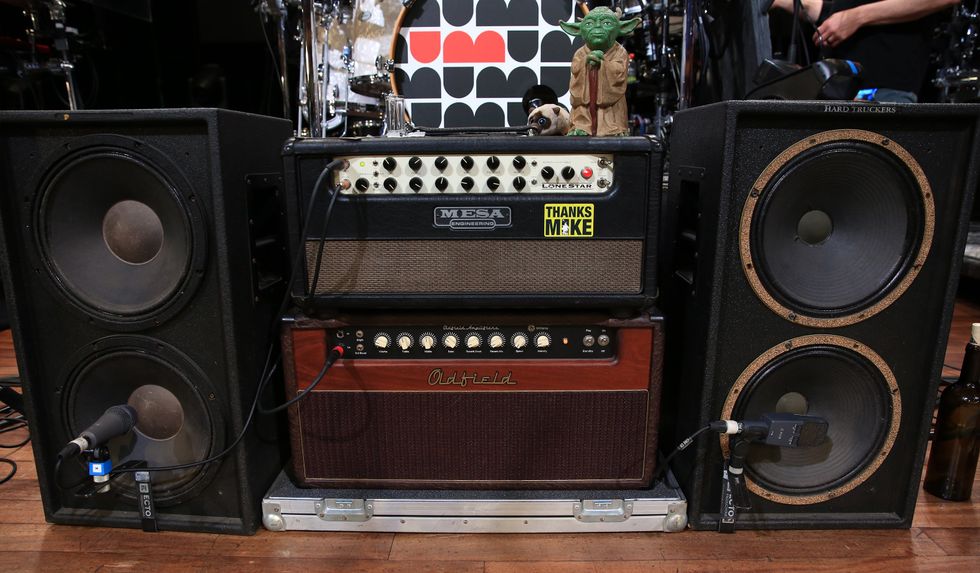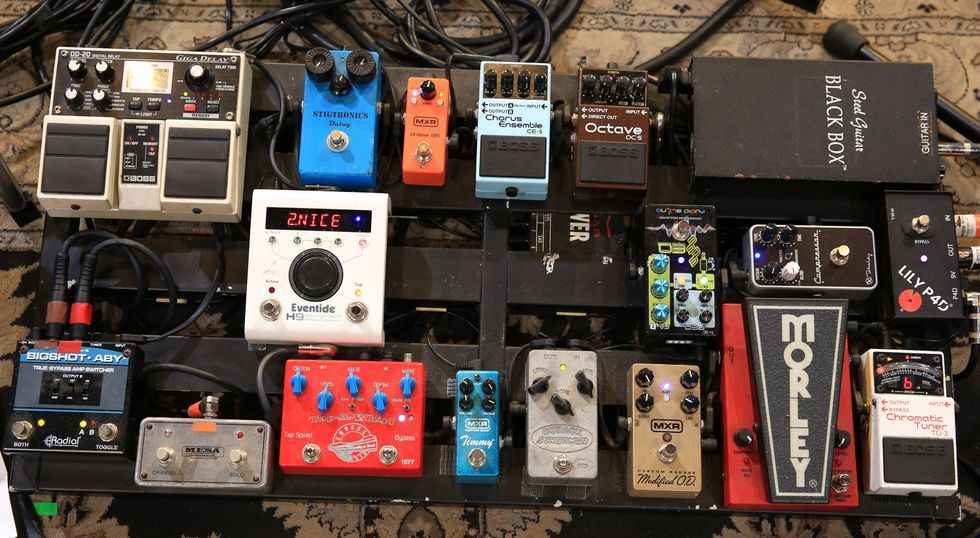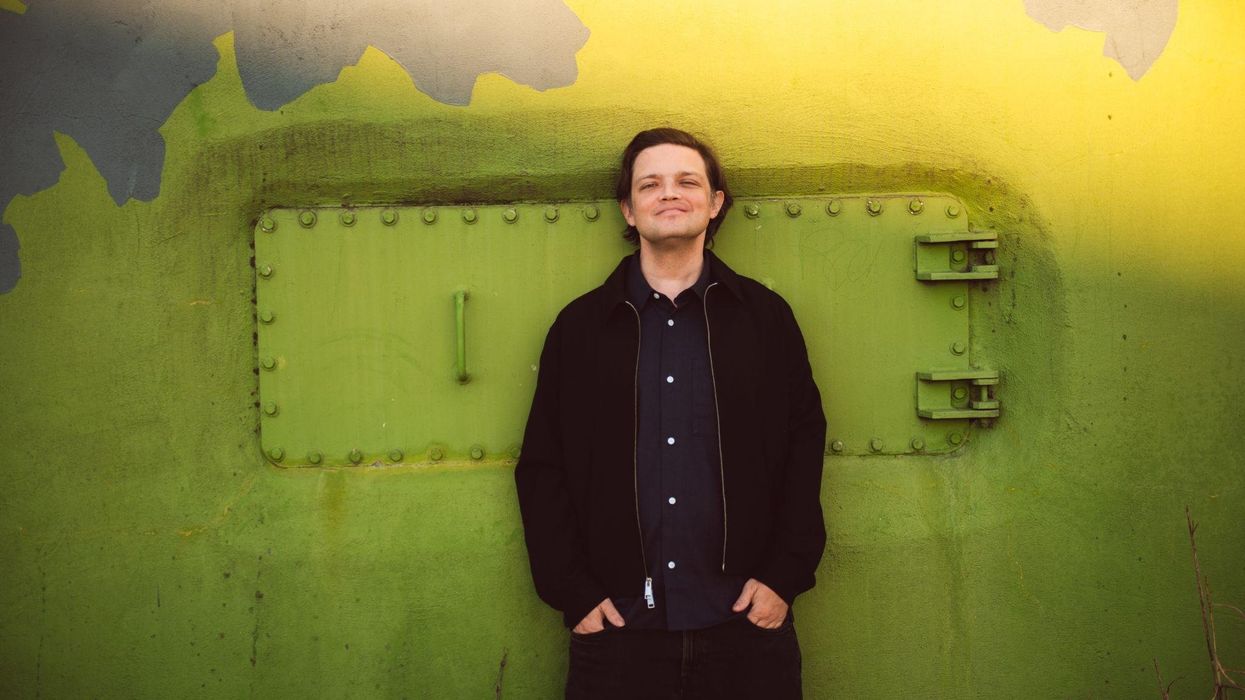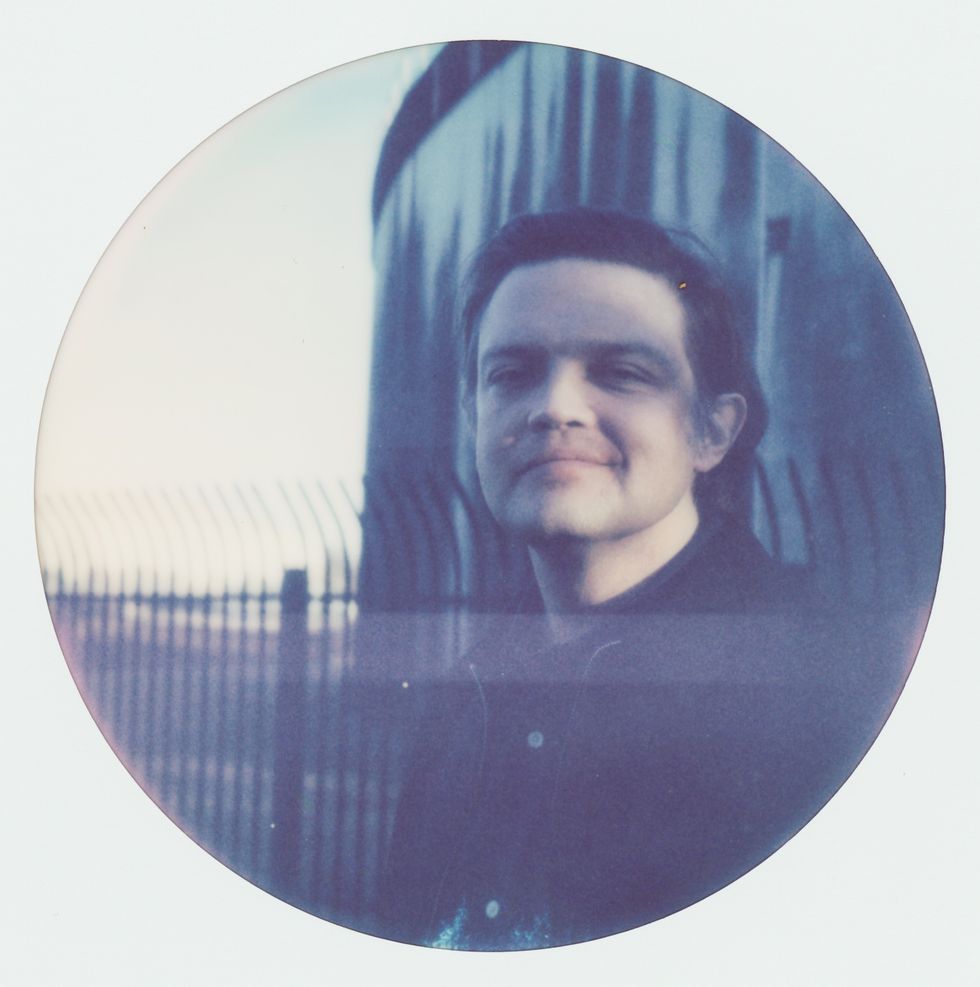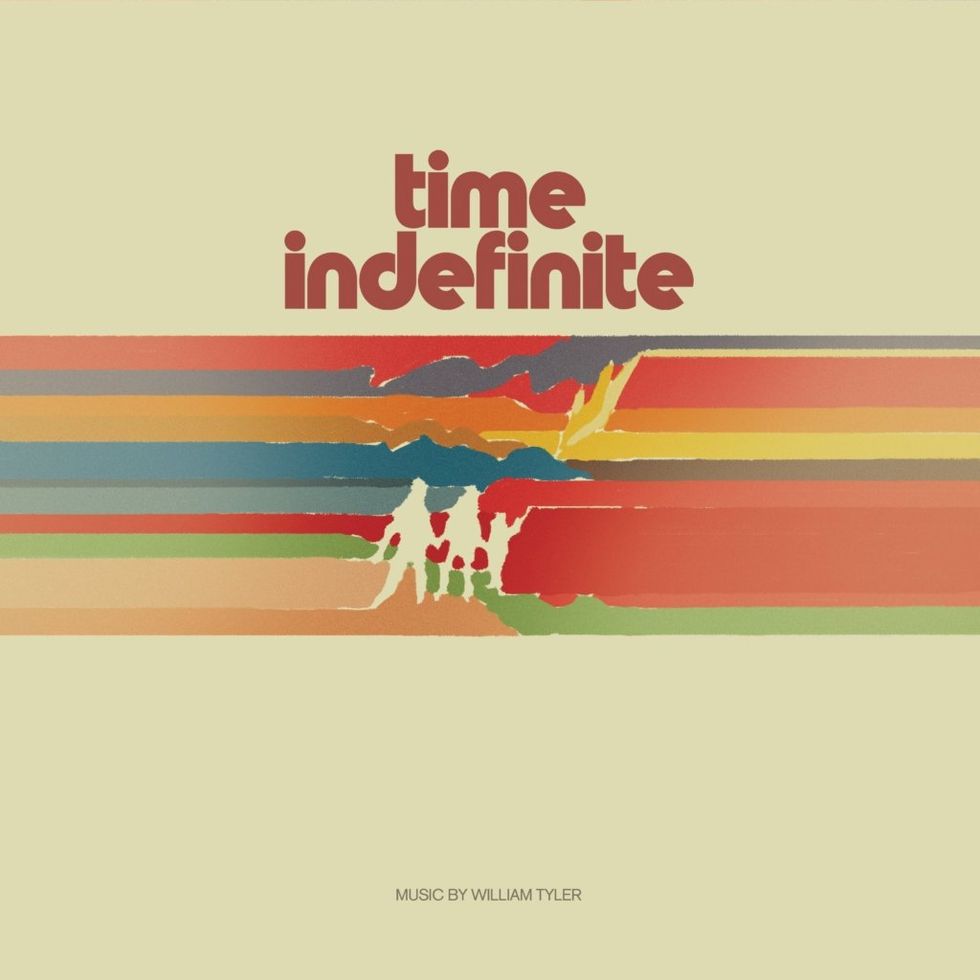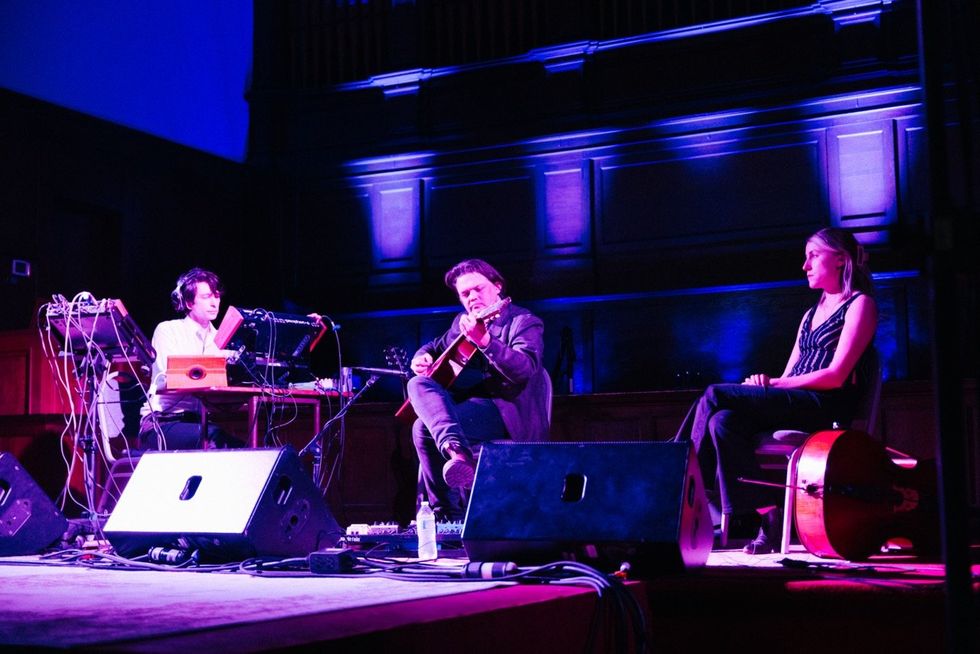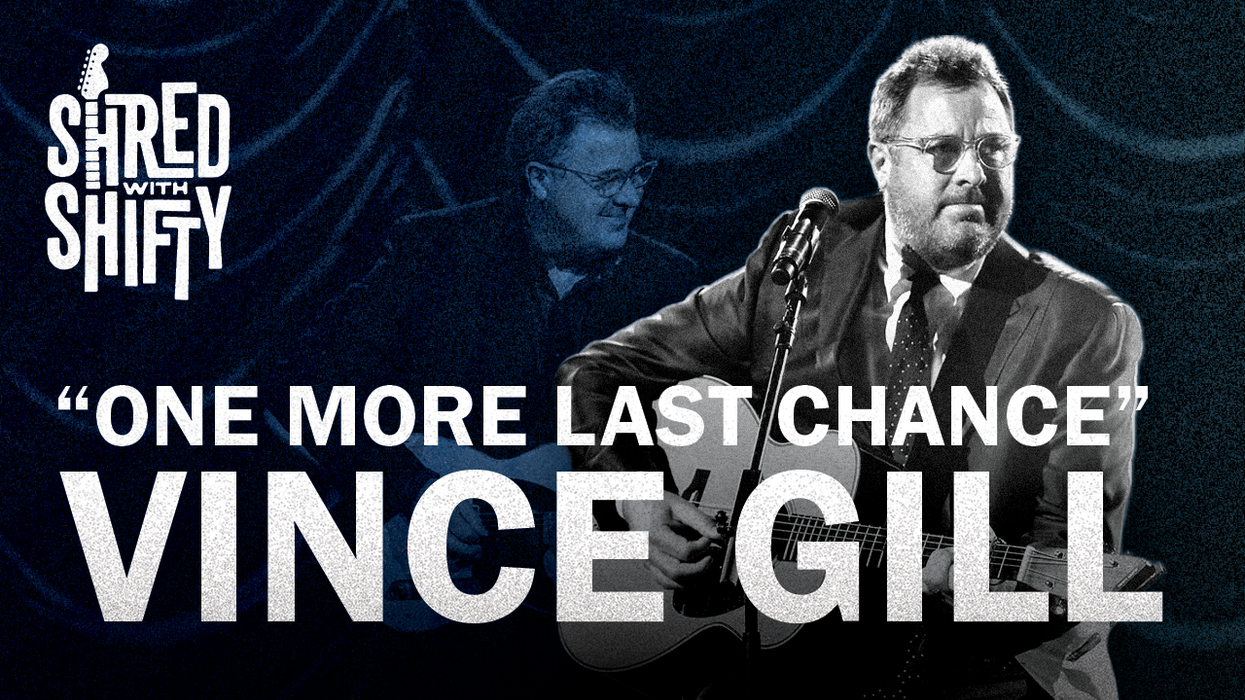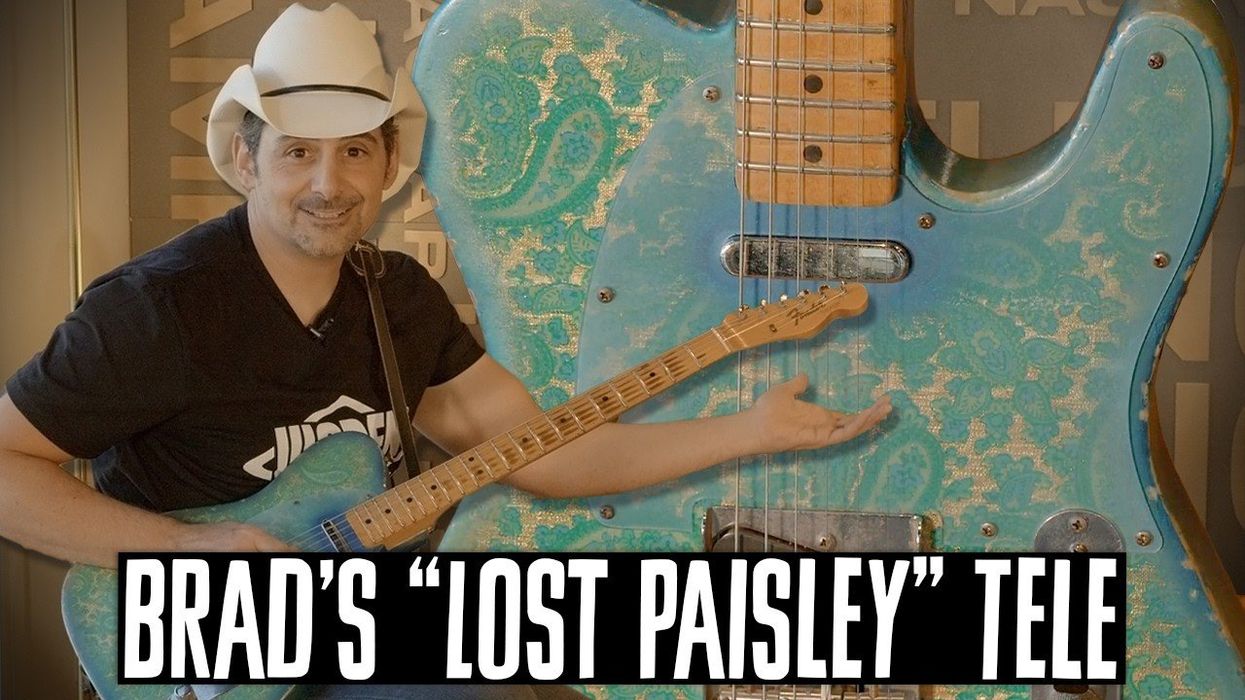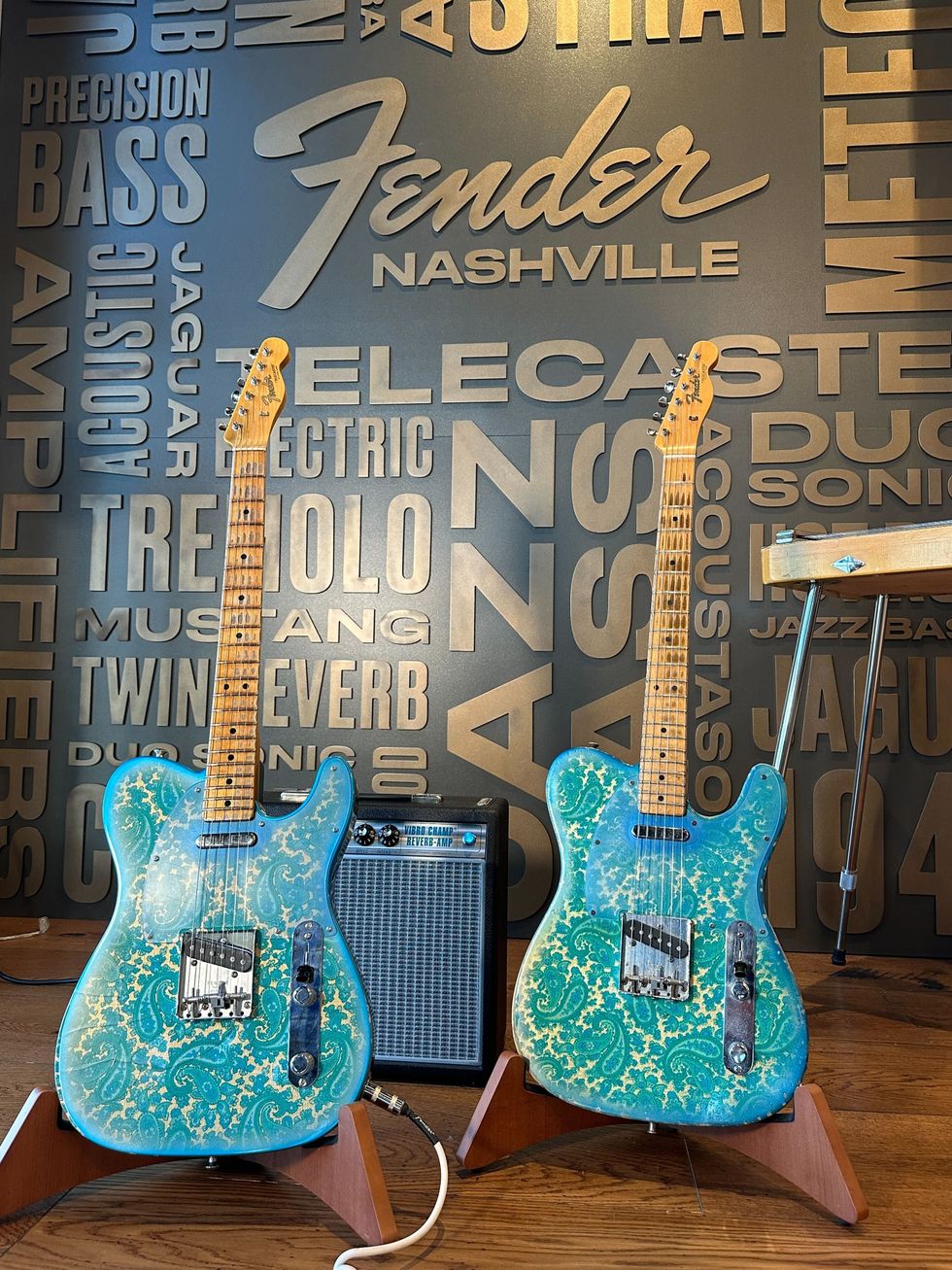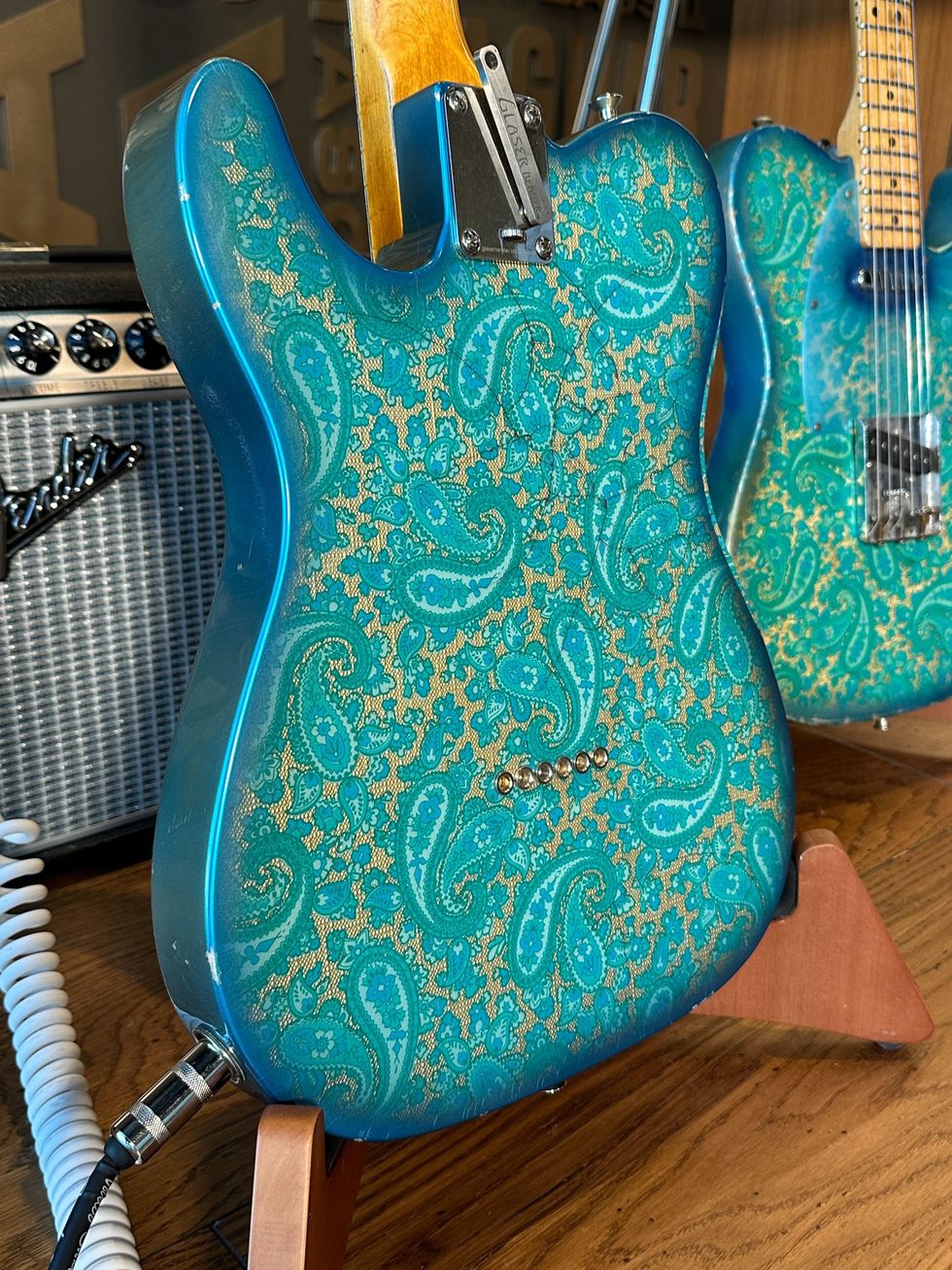Since the first time they met, over 20 years ago in Australia, Tommy Emmanuel and Martin Taylor have shared many songs together—mostly in backstage jams and occasional sit-ins when their busy schedules would coincide. "Every time we would see each other we would say how we should record [an album] because we have a chemistry together," says Emmanuel, a native Australian. And Taylor, who hails from the U.K., says that chemistry is a rare thing between two established artists who aren't afraid of carrying the musical load entirely on their own. "When you're playing solo you have to cover so many things but you don't have to do that when you play with another guitar player. You can just lay out and play some single lines, or interplay between the two."
But with Taylor coming from a more traditional jazz approach and Emmanuel rooted in the Chet Atkins school, both guitarists bring enough of a different perspective to the table to keep things interesting. On The Colonel and The Governor, Taylor and Emmanuel demonstrate the chemistry that was first discovered when the two worked out on some Django tunes during that fateful meeting in Sydney. "We're all standing on the shoulders of giants—the guys that came before us. Django was probably the biggest influence on every guitar player I know. When people ask me who is the greatest player of all time, that's easy, Django. He had no competition," mentions Emmanuel. And considering Martin Taylor did a considerable amount of time with Stephane Grappelli's group, this shared root of influence was a natural starting point.
Throughout the album, which covers everything from the Carpenters and Don McLean to classic jazz standards, the duo deftly demonstrates their natural sense of melodicisim while keeping their individual identities intact. We caught up with Taylor and Emmanuel shortly after the European leg of their tour to discuss the art of solo guitar, ’70s pop music, and why guitar education is near and dear to both of them.
Geographically, you guys are from opposite side of the world, but you've probably crossed paths pretty often on the road. Tommy, when did you first come across Martin?
Emmanuel: Years ago in Australia. I saw him on TV. It was a Saturday-night program that had comedy and music and Martin came on and played "I've Got Rhythm." He just blew the thing right out the door. I was playing a concert the next night in Sydney at a beautiful theater there, so I rang him and asked if he could come to Sydney and play with me. He flew up from Melbourne and played with me the next night as my guest.
Taylor: While I was there, everyone I met was talking about Tommy. I had never heard of him because, at that time, Tommy was a household name in Australia but he hadn't spread his wings yet to other shores that much. This was about 1990. He was playing mostly electric in those days—some acoustic—and he had a band with him. Kind of a big production. I came out and played a few tunes with him and we then just became good friends from there on.
Do you remember what tunes you played?
Emmanuel: We just played some Django tunes and it just brought the house down. Ever since then, our paths keep crossing. The funny thing is, we are almost exactly the same age—I think I'm, like, three months older or something. We've stayed in touch all those years, and every now and then I would see Martin at a guitar festival and we would end up jamming and playing together.
Tommy, is it true that Martin actually helped you get your gig with Bill Wyman?
Emmanuel: Yes! When I moved over here in England in ’98, Martin was working with Bill Wyman and the Rhythm Kings. What Martin did for me, which was really nice, was he showed Bill a video of me playing a Merle Travis tune. Bill was a big Travis fan, and the next thing I know, Bill calls me and I end up playing on three albums, and he asked me to play on a whole bunch of songs.
After being friends for so long—with so many impromptu jams—when did you guys decide to take the plunge and do a full album together?
Emmanuel: It turned out last year, in July, Martin was invited to the Chet Atkins festival in Nashville, and that's where I live. I invited him to stay at my house and come in early, and we just put the songs and arrangements together and recorded the album. Then we did the photo shoot and he was on the plane the next day—gone.
With your busy touring schedules, the pre-production process was probably a bit tough.
Taylor: That was the problem for us. We are both really, really busy. We also did some things over Skype, just talking to each other. At my house, we also filmed our rehearsal so we would remember everything, hopefully [laughs]. Tommy and I were both touring independently in the U.S. and had planned to meet in California, but I got ill and we weren't able to get together.
Once plans were made, how did you decide what tunes to play?
Emmanuel: Martin had a list of songs and I had a list of songs, and when he would get an idea he would call or Skype me and he would play it to me. On things like "I Won't Last a Day Without You"
—that’s a Paul Williams-style pop song—he said, "I really love this melody but I want to change the chord structure." So we changed the structure of the chorus of the song, gave it a bit more meat and changed the chords around. I enjoy playing that song so much. We normally open the show with it.Taylor: Tommy came to my house in Scotland when he had a couple of days off. We spent a couple of days together and, as it turned out, most of the tunes that we played came from my list. Usually when you do this you get a mixture of the two. I don't know, it just kind of worked out that way.
Tommy, were you familiar with the Carpenters tune before the sessions?
Emmanuel: Absolutely. I knew it very well from when I was a teenager. In fact, I know all the lyrics as well. Sad, isn't it? [Laughs.]
Taylor: I just had this idea about that tune because I always liked it. I started playing it pretty much the way the Carpenters did it, with that kind of feel, and then we thought it wasn't going to work so we left it alone. I came back to Tommy after a while and played it more in that kind of fast, bossa nova, almost samba-type feel. I reharmonized it and added a few extended things here and there, and it gave it another life. Before, it just didn't have any kind of life to it. Around the time that that was out, I was actually in the U.S., but it was hugely popular in all the European countries. I remember seeing the Carpenters on a TV show when I was a kid growing up, well a teenager, and just really being taken with her voice. At the time, because I was such a jazz nut, I thought, "Wow, I would love to hear her sing jazz."
So '70s pop was a real influence in your formative years?
Emmanuel: Yeah, absolutely. And some of the other songs, like "Heatwave," Martin played me the original arrangement by Carl Kress and Dick McDonough, who are two players from the 1920s and ’30s. We loved their arrangement of "Heatwave," so we borrowed the idea and jazzed it up a little, put a nice key change on it. It was really a chance for us to play some of our favorite tunes and do our own thing as if we were onstage and the songs had to work. It had to sound very spontaneous. There was no dropping in and fixing up. The solos were as they went down.
Taylor: When I played "Heatwave" for him, I could see straight away that his eyes lit up. A spark kind of went off in his mind that he could really get his teeth into this. So we based it on their arrangement, but we changed it here and there.
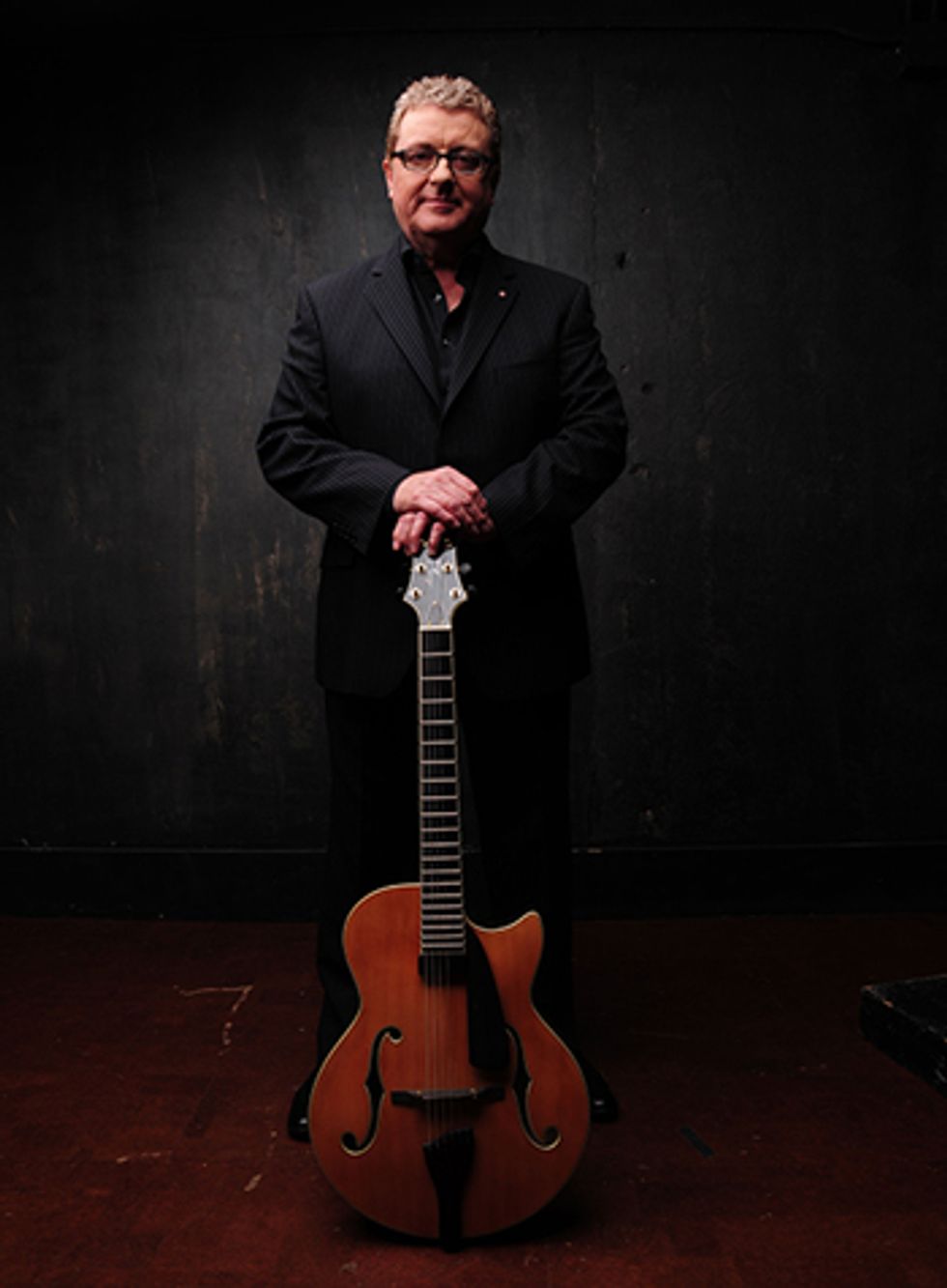
Martin Taylor
The sound of your instruments is very present and clear on the album. What guitars did you use?
Taylor: I went direct with my Peerless Maestro. I used very little of the pickup, and there were two stereo mics in front of the guitar. I can't remember what they were because Kim [Person, engineer] used her mics. That was it. Very simple.
Emmanuel: I used my Maton on "Secret Love." On "Wonderful Baby," I used a guitar made for me by David Taylor. On the rest of the album I used a brand-new Godin 5th Avenue with just a mic on it. I also used a 1930 Martin 0-17, a little-bodied mahogany guitar, which is what I use when I play with Martin and Frank Vignola when we play swing music and Django tunes.
What tunes did you use the Martin on?
Emmanuel: I used it on "Won't Last a Day" and "Bernie's Tune." On "Jersey Bounce," I used a Martin D-28 because I wanted a deeper sound.
It sounds like you used minimal effects.
Taylor: That's all done later on in the mix. Once Kim mixed it, she sent over the mixes and I just asked for some small things here and there
—just some EQ on my guitar, a couple of balance things, and some reverb. It was all done fairly simply.Let's talk about how some of these tunes were chosen. What about "Jersey Bounce?"
Taylor: Actually, what happened there was it was a tune I knew and, many years ago, I played in a band that was like the Benny Goodman small group, with clarinet, guitar, and vibes. We used to play that, and it just seemed like it was a nice, swing-y tune. I had forgotten about it, but when I wast starting to make my list for this album, I was doing some work for my guitar academy and one of my students sent me a video of him playing "Jersey Bounce." I helped him with some things on it, and then I told him it could be a good one for Tommy and me to record. He was really thrilled with having some input on the album [laughs]. I'm a big fan of a lot of the early guitar players, like Charlie Christian. There are a few references in the album to some of those early guitar players. Tommy and I do come from slightly different backgrounds, and I had spoken to him about those albums. I played them for him and he loved them. A lot of jazz guitar players that I speak to are unaware of some of these players, like Eddie Lang, Lonnie Johnson, and Nick Lucas. So, I'm on a little bit of a mission to get these guys recognized again—because they started it. They were fantastic players playing things that even now aren't that easy to play.
Emmanuel: That was our little tribute to Charlie Christian, who is one of the fathers of jazz guitar and one of the first soloists in the big-band context—guitar was only for rhythm until Charlie Christian came along. There are a few other tunes that Charlie did that Frank Vignola and I do together.
You also did Benny Goodman's "A Smooth One." I remember listening to a recording of that tune with Barney Kessel.
Taylor: I used to work a lot with Barney in the ’80s, and that was one of the tunes we did. We also played it a few times in the Great Guitars group when I took Herb Ellis' place on some tours with Barney and Charlie Byrd. Herb used to like to play it, too. I played it quite often with him. But it was one of these things. I think I've forgotten more tunes than a lot of people know. I need to delve back into my head.
You come from pretty different backgrounds, but you still find common ground in jazz standards and old-school pop tunes.
Emmanuel: I didn't really discover jazz until I was in my early 20s. I didn't hear people like B.B. King until about 1975 or '76. Martin had a great knowledge on the history of jazz, jazz guitar, and its players back as far as Eddie Lang and people like that.
Taylor: I come from a jazz background and Tommy comes from a rock and country background. First of all, he plays great rhythm—amazingly strong. And he loves doing that. Also, when he would solo, because he didn't come from that jazz background, he didn't play a lot of clichés. It was very, very fresh sounding. I've spent quite a number of years moving away from the clichés within that vocabulary, whereas Tommy didn't really have that in the first place. He was kind of learning them [laughs].
Tommy, what was the tipping point that got you into jazz?Emmanuel: It was Wes Montgomery. I heard Wes and just fell in love with that style of playing. I heard Django, as well. I read about so many guitar players because I was really into Chet Atkins, and Chet often talked about people like Joe Pass and Johnny Smith and Django and people like that. So I started checking out players that were recommended to me by Chet, and discovered a whole world of music. Both Martin and I are very melodic jazz players. We aren't the "outside" type of guys—we have blues roots in our playing. People ask me when I do workshops, "Who do you listen to?" Actually, I listen to everyone, but if I want to be inspired by a guitar player I always go to Django. He does it to me every time. If I want to be astounded, I usually watch Wes, and if I want to be entertained I watch Elton John, Billy Joel, or Stevie Wonder.
The artificial harmonics in the intro to "Secret Love" sound like an homagé to Chet or Lenny Breau.
Emmanuel: I can't remember what I did on the intro—because I only did it once. When I play the song live, I do that type of thing, too, though. I did the arranger's thing of altering every chord in the bridge—all those unresolved chords each time you get to the bridge. [Sings melody.] When you get to each chord change, they’re completely different.
Taylor: Tommy is undoubtedly the best at doing harmonics of any guitar player in the world. He's taken it to another level.
The ballads on this album are especially strong. What's the most difficult thing about playing a ballad?
Taylor: Playing the melody—interpreting the melody. I say to a lot of my students now, if they are learning a melody, don't listen to jazz players play it—because very often it's been changed and changed. You want to listen to singers like Frank Sinatra and Peggy Lee or Julie London, singers who could really interpret a song. That way you not only get the melody right, but you also get an idea of the pace of the phrasing. If you don't know that, you can kind of phrase things wrong. Of course you can play around with that, but phrasing is the most important thing. Tommy chose “The Nearness of You,” and he loves to get a melody to sing out and squeeze every ounce from it, and he's great at it.
Tommy Emmanuel
Martin, you also snuck some originals onto the album.
Taylor: I only write music when I have to—when I have a project. Some people I know write something everyday. I don't, because I find if I do that I just have all this music driving around in my head making me crazy [laughs]. It's very difficult to work on new things when you are on the road, because you’re just keeping that together and constantly moving. The most important thing is doing the gig and doing the gig well. If I'm at home, then I can kind of think of new things. This summer I'm not touring, so I'm going to spend quite a bit of time coming up with some original music. A lot of the original music I write isn't for solo guitar. I had a group called Spirit of Django, and I wrote a lot of music for that. I wrote an orchestral suite, which was performed recently with Britain Symphonia. I like to hear it played in a band setting, with other people playing it. I'm thinking of writing some more things for solo guitar for me to play, though.
It must be a great feeling, knowing you're contributing to the solo-guitar repertoire.
Taylor: Yeah, it is. We recorded one of my tunes, "True," on the album, and a lot of guitar players play that now—particularly in Asia. It's just the melody that has seemed to really catch on there. It's been used in Japan on a couple of TV things, as well.
Emmanuel: There's no greater high in life than playing your own music—it's like the ultimate drug. I really, really love playing my own songs and putting it out there. On the other hand, when I find a song I really like—for instance, "Wonderful Baby"—I find a nice key to play it in where the melody would sound flowing, with some nice, juicy chords underneath. I really enjoy putting those arrangements together. I try to keep it simple and smooth and try to find ways of surprising the listener, y'know?
Martin Taylor's Gear
Guitars
Peerless Martin Taylor Maestro
Strings, Picks, and Accessories
Elixir Nickel Roundwound Nanoweb .012–.052 sets, David Grisman Dawg mandolin picks
Tommy Emmanuel's Gear
Guitars
Maton EBG808, David Taylor OM-size acousitc, Godin 5th Avenue, Martin 0-17, Martin D-28
Strings
Martin .012–.054 sets
You're both pretty active with guitar education these days. Martin, how did your online lessons come about?
Taylor: I was asked to do it, really. I had no interest at all in teaching, because I wouldn't know what to teach—I wasn't taught myself! But a lot of guitarists ask for lessons. The guy who was my guitar mentor was a guy named Ike Issacs, and he was a very good teacher. Although I didn't have lessons with him, I used to hang out with him and we did some gigs together. He said when you get older you will feel like teaching, and it'd be a good thing if you do because by then you will have acquired so much more knowledge and you will need to share it.
As time went on, when I was home from touring, I thought about all the players who had asked for lessons. Instead of just sitting here while not touring, I thought I could do that. So often I was hearing guitar players that actually played well, but I thought I could make them play that better by suggesting some things to them. I started doing mentoring sessions about two or three times a year. I used to hire a studio and had a number of students who used to come. Essentially, I became a guitar psychologist, because I was working with their minds more than their guitar playing. That really interested me. It was just the way they were looking at things—it was just the wrong way or they hadn't even noticed certain things.
I had been doing that for about a year or so when I was in Italy doing a gig and ran into Jimmy Bruno while he was on vacation. He started telling me about the guitar school he had with ArtistWorks and how David Butler had mentioned to him that he would be very interested in me starting an online school. My immediate reaction was "No." It was too much and I wouldn't have the time to do it. But we set up a phone conversation with David and we got talking about it and I decided to give it a try. My biggest concern was not having the time. There were a few scary moments when I was on tour and was trying to keep up with video submissions, but as time has gone by now—almost three years—I've figured out how to do it, and I pretty well keep on top of everything. If I'm at home, I film at my studio at home, and on the road I have a little camera and my laptop. The first thing was coming up with a curriculum. I had to get together with David and understand what's involved when you want to learn to play the guitar. I spent a lot of time with David figuring out what guitar players want to know from me. He heaped a lot of things out, and from that I came up with a method. I had already written a method book with David Mead. I thought I could base things around that—well I had to, because that's what I do. So, we got together and filmed all the material and took it from there. The great thing is, as I started to do it, I found out I really enjoy teaching.
Tommy, how about you—what's your take on teaching?
Emmanuel: I think it's important to learn stuff correctly. Young people are learning at such an incredible rate now because they have everything in front of them. I still recommend people don't use tab. You need to recognize it and tell that the song is in E and then goes to C# minor, y'know? They have to train their ear. I still encourage young people especially to do that. There's no greater pleasure than teaching someone something that blows their mind.


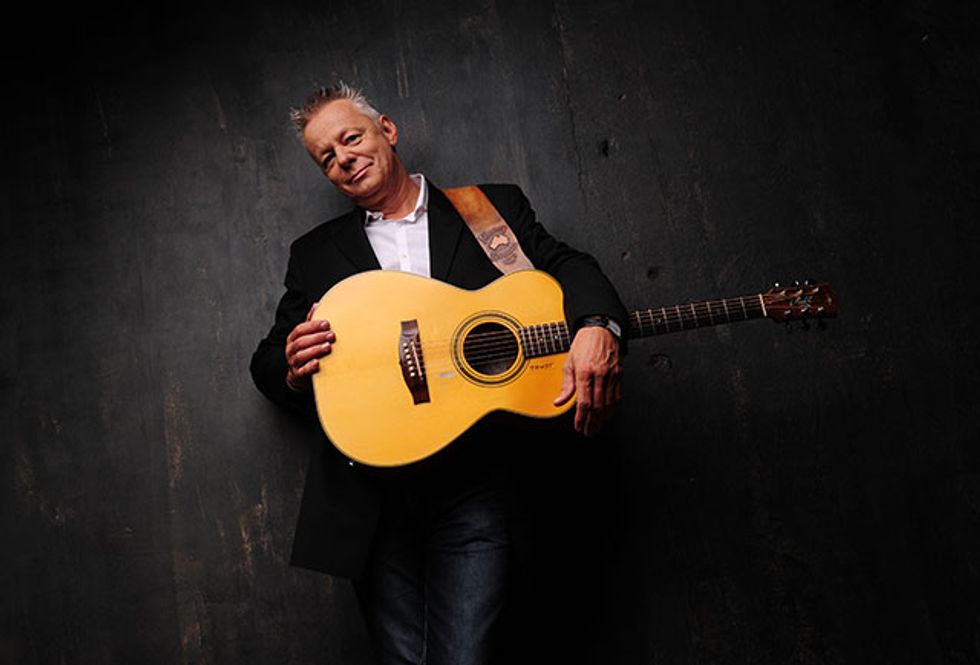
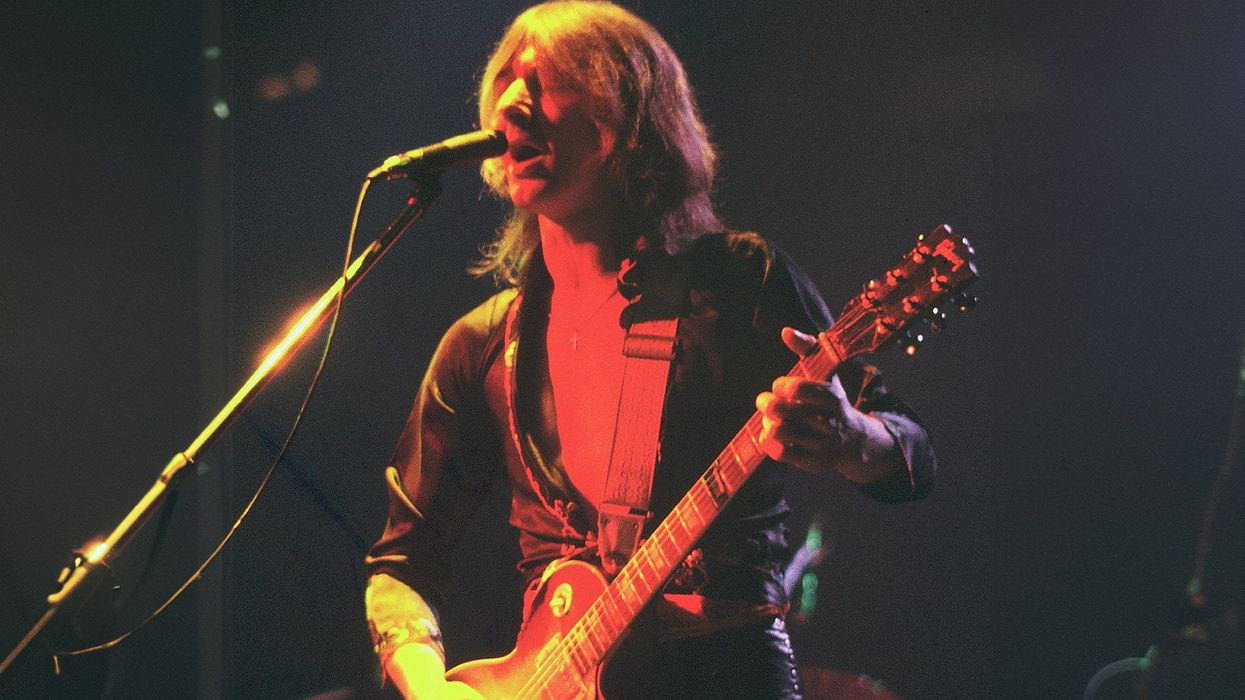


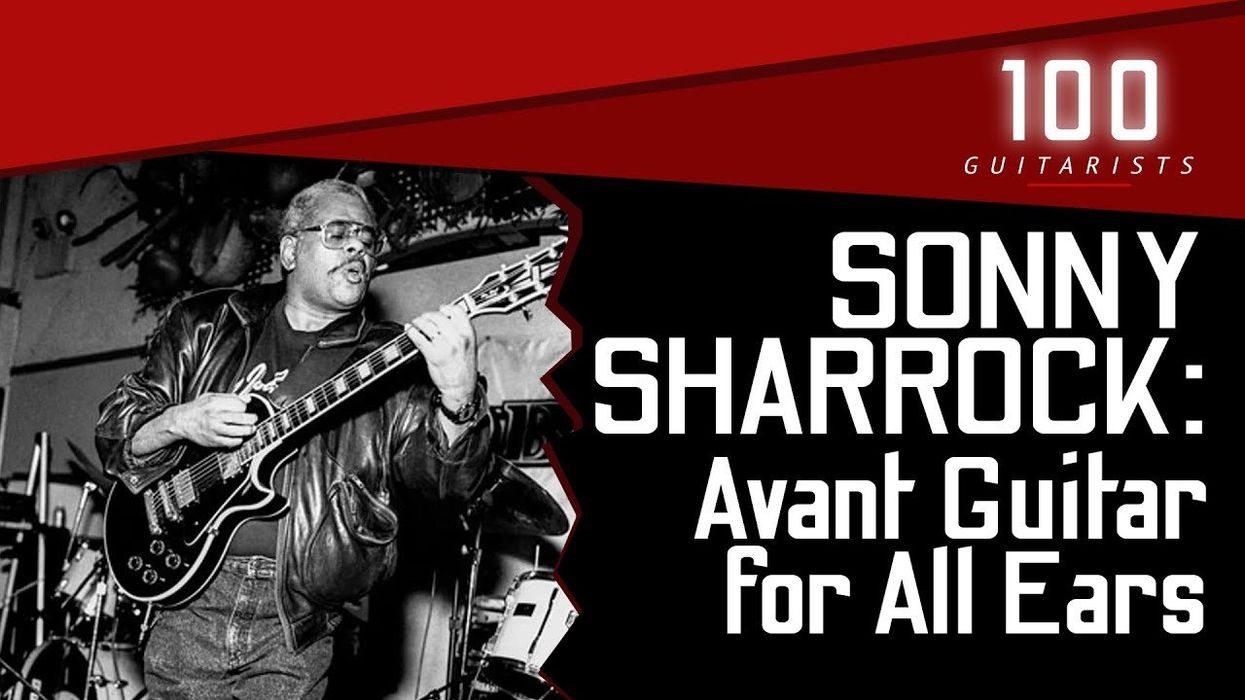
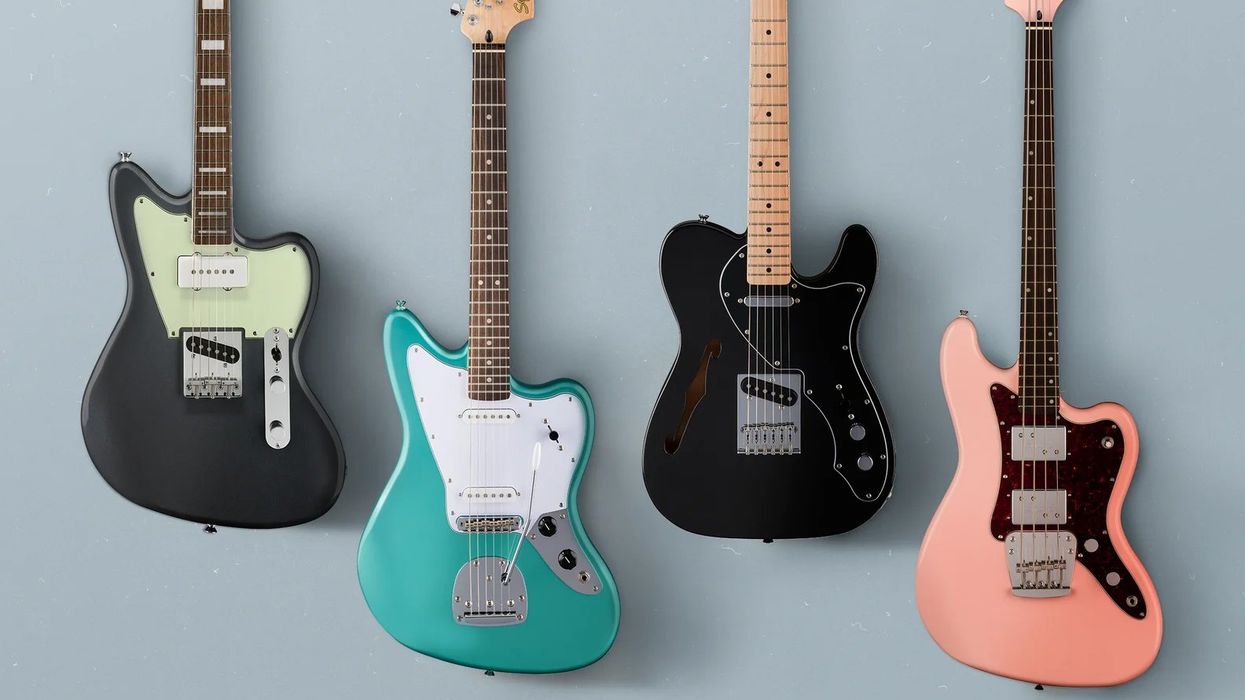
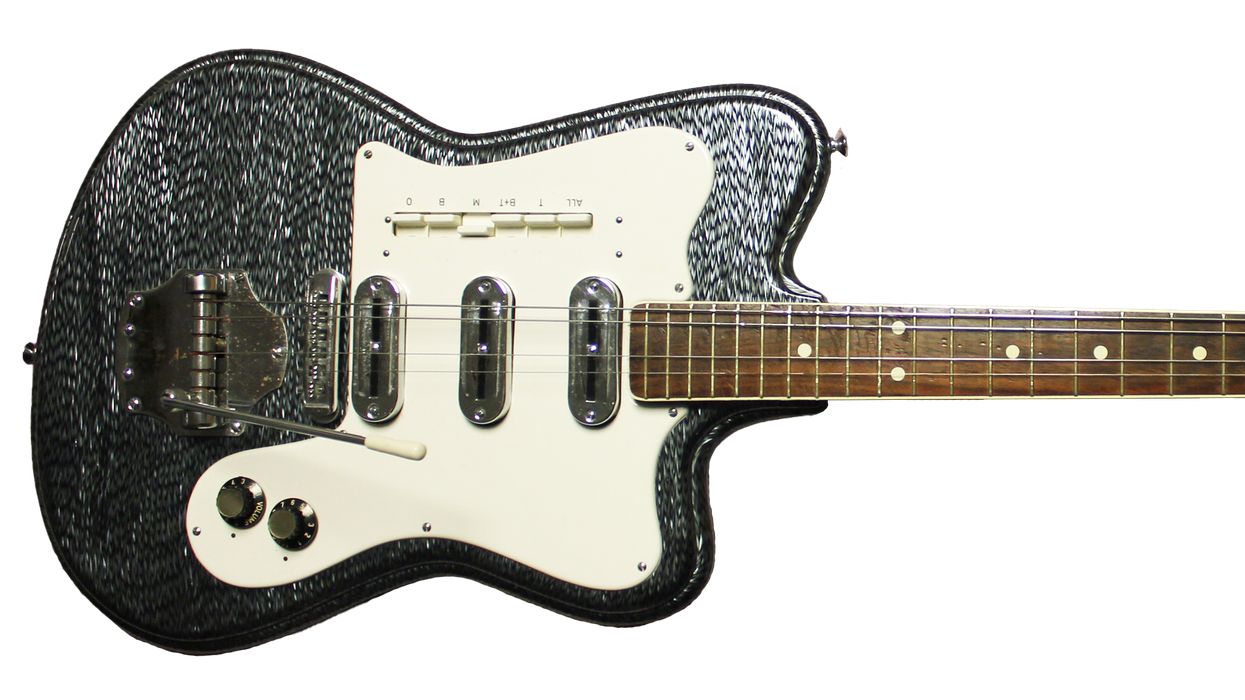
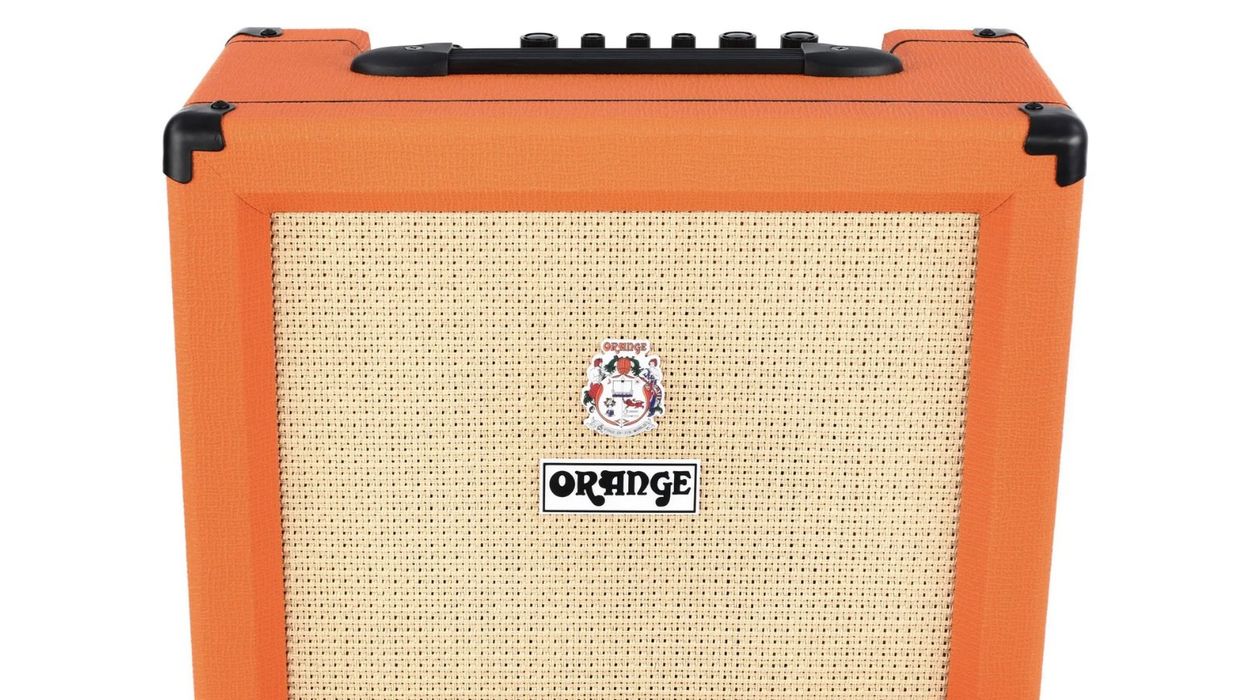


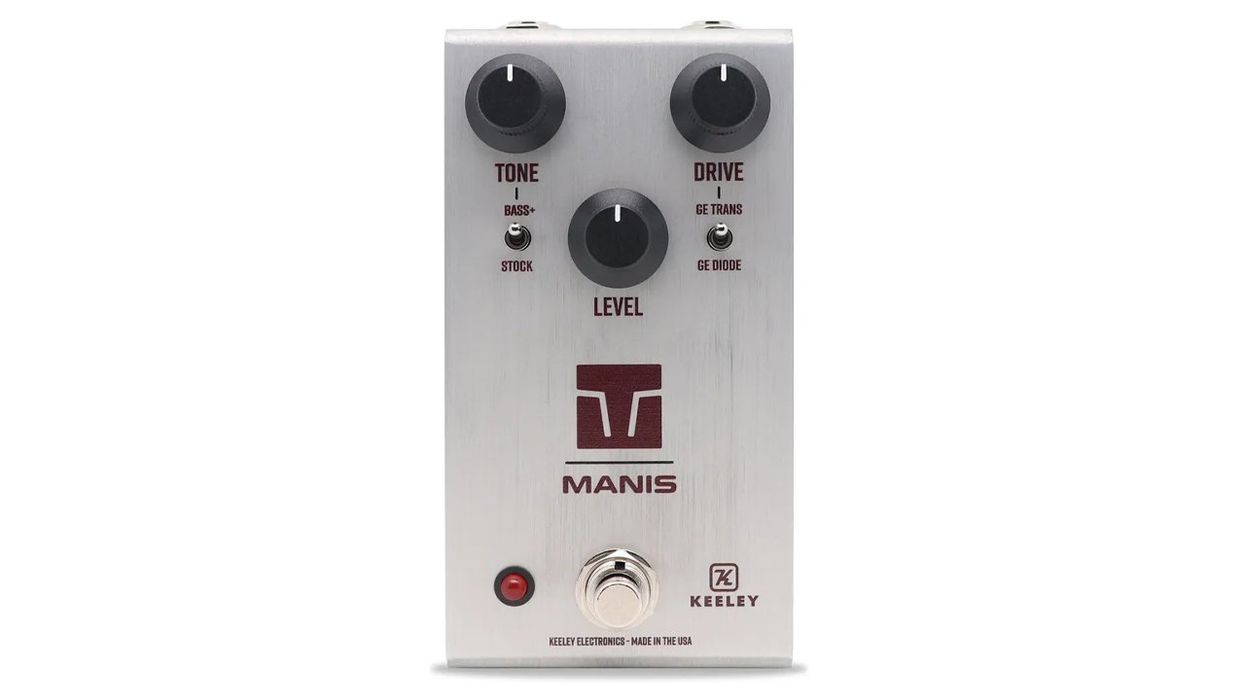
![Rig Rundown: Umphrey’s McGee [2025]](https://www.premierguitar.com/media-library/youtube.jpg?id=60219771&width=1245&height=700&quality=85&coordinates=0%2C0%2C0%2C0)
